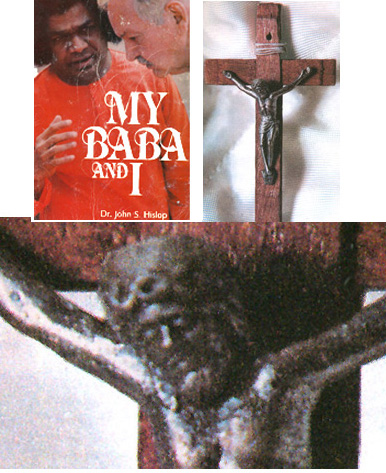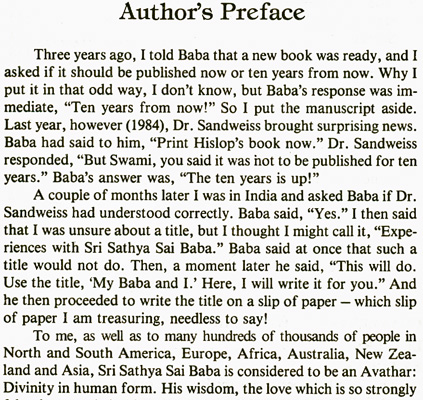(J.Hislop. My Baba and I. Indian edition, p.188)
SAI: Crime has become very bad in India. There is no safety.
JOHN HISLOP: Swami, this is not particular to India. The same is true all over the world. How will it end?
SAI: To the good. In a few years, all will be peaceful.
JH: But Swami, it is getting worse, and it is the Kali Yuga (a world period of diminishing virtue).
SAI: No. It is not as bad now as it was. It is like in the ocean. There is a time of high waves, and there may be some peak waves that crash heavily on the shore, but this is followed by a calm and peaceful sea.
[…]
JH: We are fortunate to be alive so that we may see this peaceful world.
SAI: You will all see it. Even the old men will live to see it.
(Interview of 1978)
Comment: More than "a few years" have passed since 1978, but things are still very bad in India. One can say there is still no safety. Consider one item only: UNICEF reports "With an estimated 12.6 million children engaged in hazardous occupations (2001 Census), for instance, India has the largest number of child labourers under the age of 14 in the world." (or see also here) This is but one of countless major issues of lacking public safety in India. When Hislop died in 1995, the world could hardly have been considered to be peaceful, nor is it in 2010.
(J.Hislop. My Baba and I. Indian edition, p.189)
SAI: In all countries there is a rapid deterioration of the human quality.
JOHN HISLOP: When will it change for the better?
SAI: Soon there will be a change.
JH: When is soon, Swami? Twenty years? Ten years?
SAI: No. Now. Already there is some slight improvement in India. One cause of the general deterioration in the world is rapid communication. This allows advertising and publicity to have a strong influence on people. Your American election is an illustration of how the leaders are television actors.
JH: Swami, there is no evidence of a change for the better.
SAI: If there is a change, it will be a universal change. Not local. It will occur every place.
(Interview of 1980)
Comment: Sai Baba, when buttonholed for once by Hislop, defines his word 'soon' and meaning 'Now', on the grounds that there was already some "slight improvement" in India then. For the hundreds of millions below subsistence levels things have hardly changed at all and often got worse by 2010.
|


